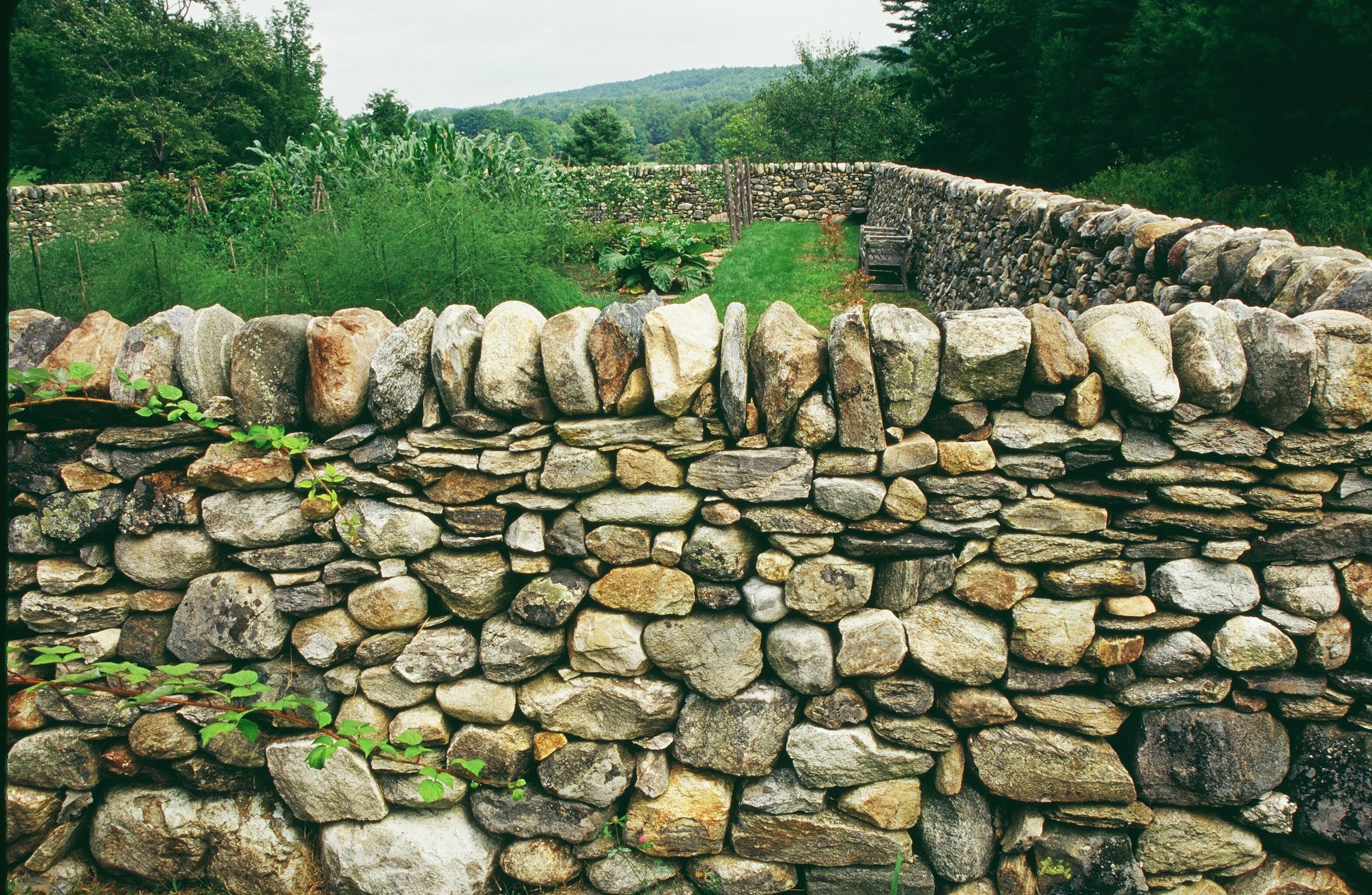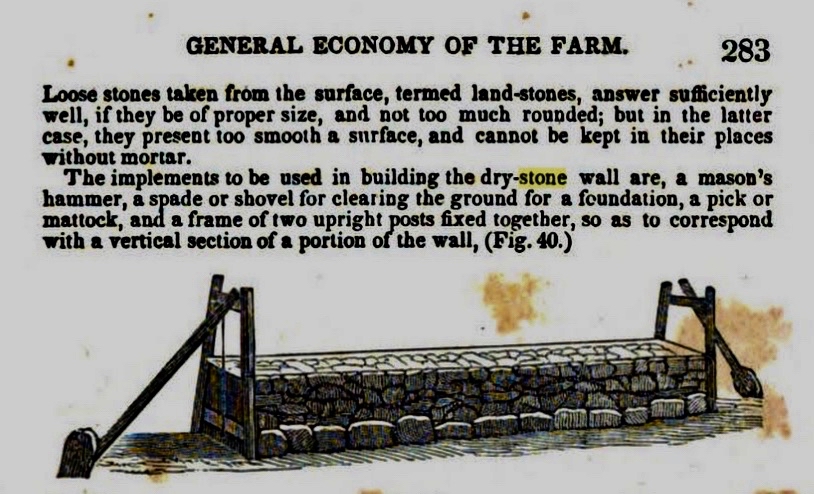The New England Farmer: Stone Fences
Published one hundred sixty-one years ago, the excerpt, below, from the November issue of “The New England Farmer” contains much the same advice contemporary walling instructors offer their students. Interestingly, many of the terms used to describe the craft are recognizable today. Although, as you'll discover in reading the final passage, production expectations have changed substantially since 1858, when a waller laid up, on average, three rods* of stone fence in a day.
A typical DSWA test day is a good example of twenty-first-century walling. An Initial Certification candidate, presumably with several months experience before testing, is expected to tear down and rebuild a six-foot-long, four-foot-six-inch-high fence. Put in terms familiar to a nineteenth century waller, that’s equivalent to half a rod length of fence. Are you ready to take the “New England Farmer” challenge? Just remember, if you want to see three rods finished by day’s end - head all to the line, both sharp-pointed and rough!
The New England Farmer 1858
Many stone fences which I see are built for beauty instead of strength; the consequence is, presently down falls the fence,---and then for patch-work, and away goes beauty. A stone-mason is not the man to put up a stone fence, for he will be too tedious and neat, consequently too costly. To make a stone fence strongly and expeditiously, will require several months experience.
Having determined the proper site for your fence, deposit as many stone on each side as you think will be sufficient. If your site is level, or nearly so, no further preparation is required, but stretch your line and go to work. It is well to use two lines, one on each side, so that there be no shifting about of the line. Raise your line, or lines, eight inches or more from the ground, so that the foundation stones may be placed underneath, thus making a shoulder or jog, on the exterior of the fence, of some inches, depending on the size of the stone. Laying the largest rock first, and the largest continually, until the fence is complete.
Three feet at the base, four feet six inches high, and ten or twelve inches at the top, is an excellent fence; but with good stone a body of less dimensions will suffice.
As the fence rises, lift the line and be mindful to begin to batter or slope the wall at the foundation, and continue to batter uniformly to the top.
My fences, lately made, look rough, because I pay no attention to a face stone, but head all to the line, both sharp-pointed and rough. The stones should be laid flat, and kept level, to do which it is sometimes necessary to fill in with small stones. Be slow and particular in laying the foundation, a little faster in the body, and near the top small stones require a quick motion, or but little is done,--- always being mindful not to leave a stone to jostle in the wall.
When stones are at hand, a man who understands the business, can put up one and a half to four rods of fence in a day. After a fence is two feet high I can head on the stone as fast as two men can hand them to me. The great art is dropping the stone in the proper place, so that no further handling shall be required. About one hundred eighty common sized stones will build a rod (16.5 feet) of fence. Work nine hours in the day, and handle one stone the minute, you will have made three rods of fence; and surely a man can do this.
* The rod is a unit of length exactly equal to 5 1⁄2 yards or 16 1⁄2 feet


